Learn how to make silky, smooth vanilla pastry cream—a versatile custard that’s perfect on its own or used to fill eclairs, frost cakes, and more. A must-have recipe for any baker!
Every home cook should have a solid recipe for pastry cream in their collection, and trust me—this one will quickly become a go-to. Think of it as a vanilla custard, but with a richer, creamier texture that takes everything it touches to the next level. Whether you use it to fill delicate cream puffs, frost a beautiful cake, or simply enjoy it as its own indulgent treat, this pastry cream is the key to so many delicious desserts. It’s smooth, velvety, and just plain luscious—you’ll want to spread it on just about everything!
Pastry cream is one of those classic recipes that every baker should have in their repertoire because it's so versatile. It’s the foundation of countless desserts, from the French eclair to fruit tarts, yet it’s also absolutely divine when enjoyed on its own. You could serve it as a simple but elegant pudding, topped with a few fresh berries or a sprinkle of cinnamon, and it’ll feel like a luxurious treat. And if you're looking for a creamy filling for cakes or pastries, this is your perfect solution. It's like homemade vanilla pudding, but with a depth of flavor and texture that will leave you coming back for more.
Once you master pastry cream, the possibilities are endless. It’s a must-try recipe that will elevate your baking, whether you’re creating show-stopping desserts or enjoying a quiet moment with a simple, silky spoonful.
This recipe is from my most trusted source, Cook's Illustrated.
Ingredients:
2 cups half and half
⅓-1/2 cup sugar, plus 2 Tablespoons sugar
⅛ teaspoon salt
5 egg yolks
3 Tablespoons cornstarch
4 Tablespoons butter
1 vanilla bean or 2 teaspoons vanilla extract
1-2 teaspoons cognac, optional
How To Make Vanilla Pastry Cream
I usually make a double batch of pastry cream, since I'm either making it for a large cake, or if I don't use all the pastry cream, it's a great dessert to have on hand to use in fruit salads, or to eat as a custard. Just warning you so you're not misled by the pictures. I was making a double portion:).
Pour the half and half into a small/medium saucepan. It's important to uses a saucepan with a good, solid bottom, or your custard will burn easily. If you don't have a good quality saucepan, use a pot with a nonstick finish.
Add the ⅓-1/2 cups of sugar and salt. I'll be honest; I add about ¼ cup of sugar. What can I say? I don't like my desserts to be too sweet.
If you're using a vanilla bean, split it in half with a knife and scrape out the seeds. 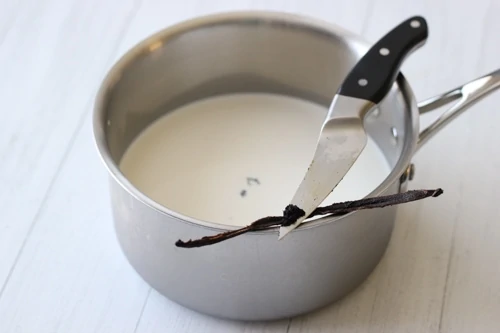
Bring the mixture to a simmer on medium low heat, just until the sugar dissolves and you see tiny bubbles begin to appear on the surface of the half and half.
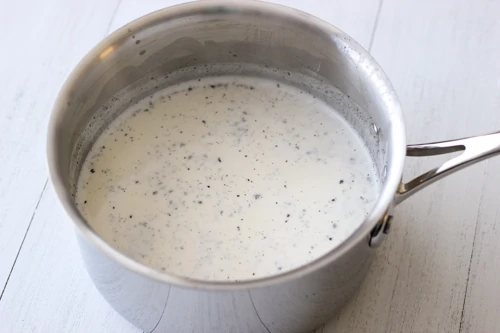
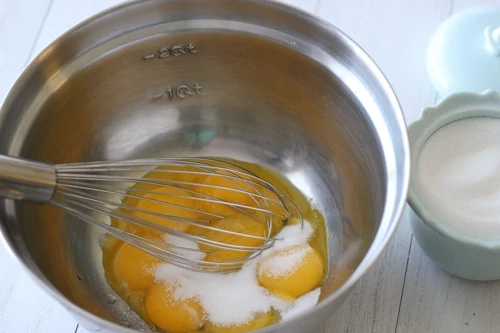
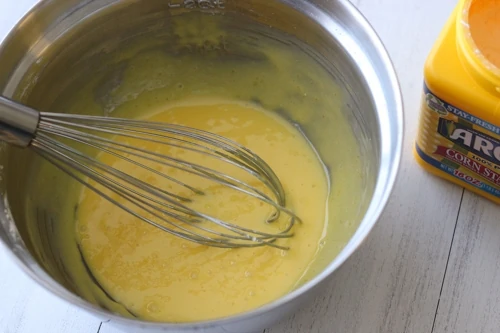
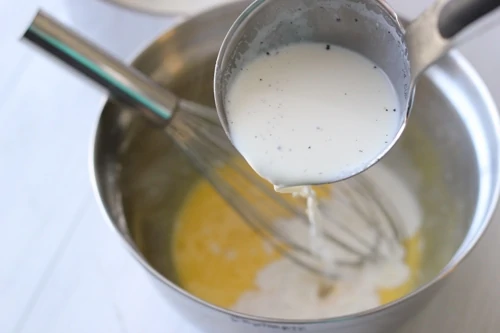
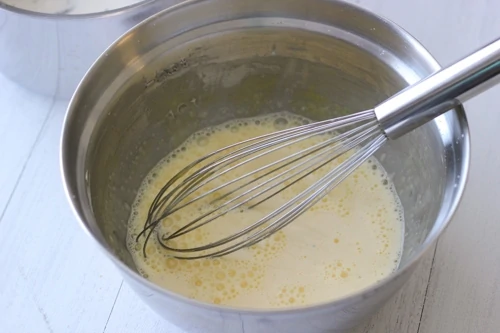
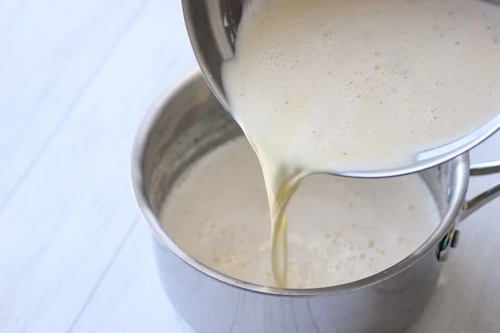
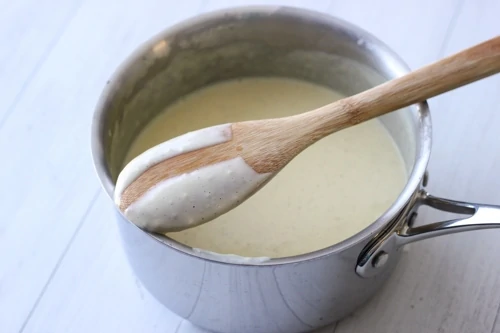
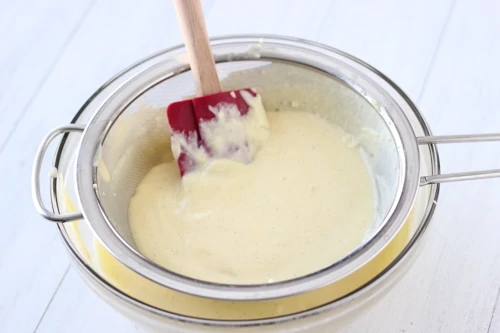
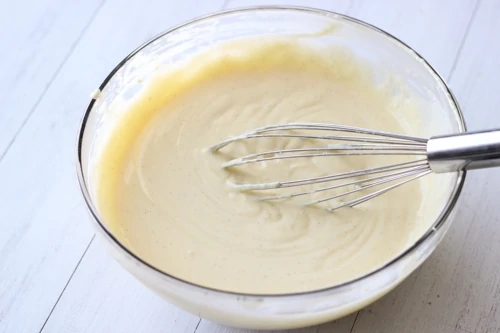
You can make the pastry cream/custard DAYS in advance, which is such a huge plus. Keep it refrigerated and tightly covered.
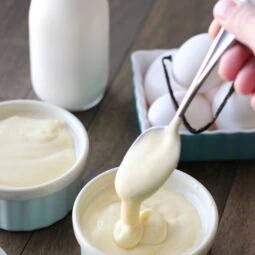
Vanilla Pastry Cream
Ingredients
- 2 cups half and half
- ⅓-1/2 cup sugar plus 2 Tablespoons sugar
- ⅛ teaspoon salt
- 5 egg yolks
- 3 Tablespoons cornstarch
- 4 Tablespoons butter
- 1 vanilla bean or 2 teaspoons vanilla extract
- 1-2 teaspoons cognac optional
Instructions
- I usually make a double batch of pastry cream, since I'm either making it for a large cake, or if I don't use all the pastry cream, it's a great dessert to have on hand to use in fruit salads, or to eat as a custard.
- Pour the half and half into a small/medium saucepan. It's important to uses a saucepan with a solid bottom, or your custard will burn easily. If you don't have a good quality saucepan, use a pot with a nonstick finish.
- Add the ⅓-1/2 cups of sugar and salt. I'll be honest; I add about ¼ cup of sugar. What can I say? I don't like my desserts to be too sweet.
- If you're using a vanilla bean, split it in half with a knife and scrape out the seeds. Add the seeds to the half and half. (Don't forget to use up the scraped out vanilla bean by making Vanilla Sugar, which, if you have some on hand, you can use in this recipe instead of regular sugar. It will taste phenomenal.) If you're using vanilla extract, don't pour it in yet.
- Bring the mixture to a simmer on medium low heat, just until the sugar dissolves and you see tiny bubbles begin to appear on the surface of the half and half.
- Meanwhile, whisk the egg yolks with the remaining 2 Tablespoons of sugar in a large bowl, until the sugar dissolves.
- Add the cornstarch and keep whisking until it's completely incorporated into the egg yolks.
- As soon as the half and half comes to a simmer, ladle in a small amount of the hot liquid into the egg yolk mixture, whisking it all together at the same time, to make sure your eggs don't scramble. Gradually add more of the hot liquid, until you have all of it mixed together.
- Pour the mixture back into the saucepan, return it to the stove and cook on low heat, whisking constantly, until the custard thickens. You can make sure it's thick enough by dipping a wooden spoon into the custard and when you run your finger down the center, the line should remain there and not run together. Another sign to look for is that as soon as the custard thickens, you will see bubbles start to rise from the very bottom of the saucepan and burst at the top. Turn off the heat immediately.
- At this point, check the insistency of your custard. If there are any lumps, tiny or big, it's very easy to fix this. Pour the custard through a fine mesh sieve and you'll have beautiful, smooth pastry cream.
- While it's still hot, add the butter and mix it all together until the butter melts.
- If you're using vanilla extract, add it to the pastry cream now, along with the cognac, if you're using it. Cool the pastry cream before using it.
- To prevent a skin from forming on the very top of the pastry cream, place a piece of plastic wrap or a bit or parchment paper directly on the surface of the pastry cream.
- You can make the pastry cream/custard DAYS in advance, which is such a huge plus. Keep it refrigerated and tightly covered.
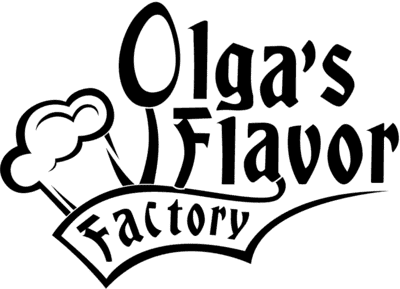
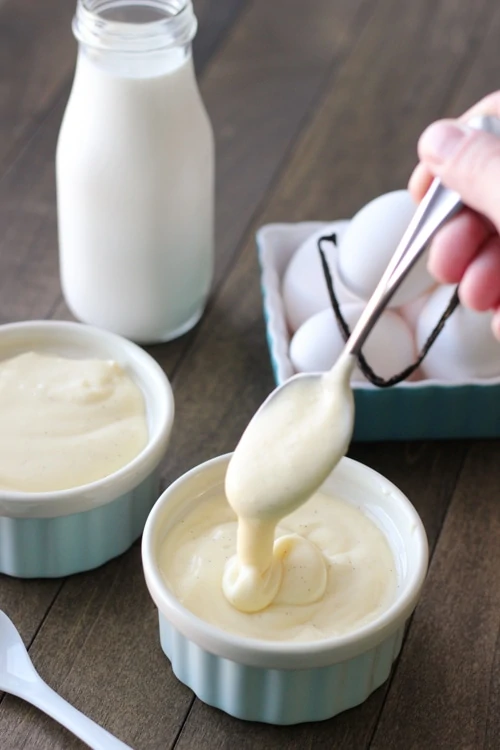
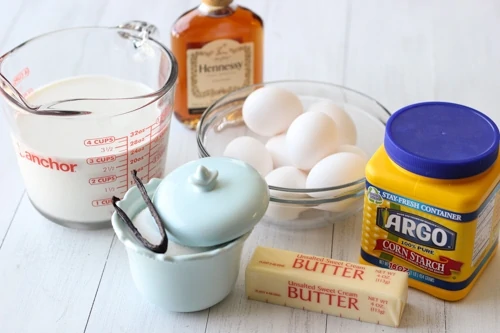
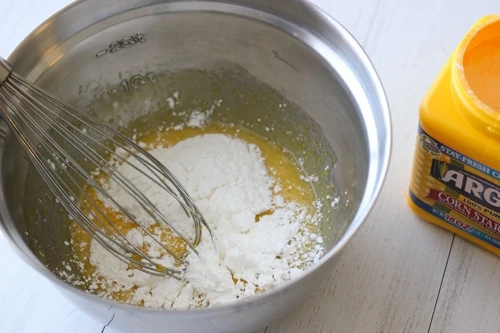
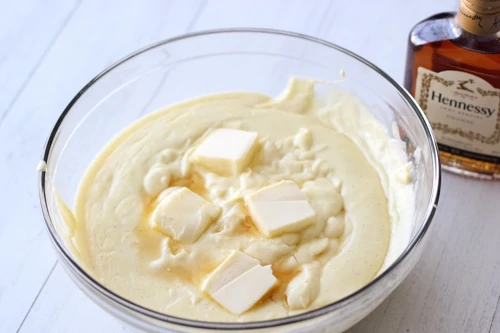
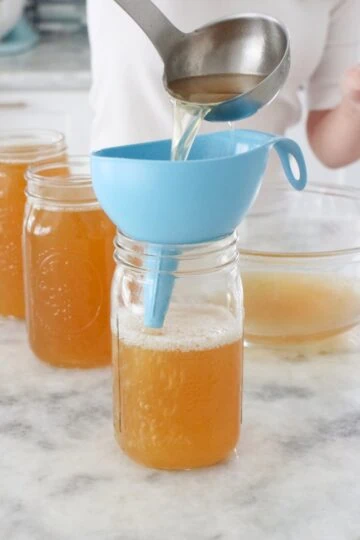
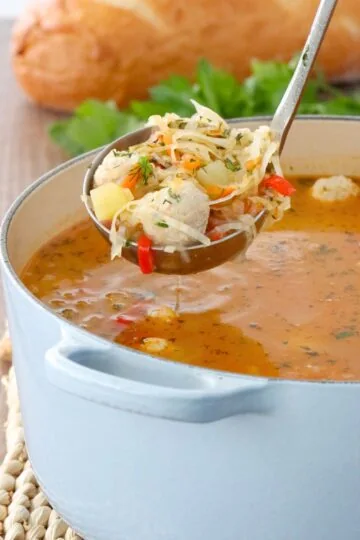
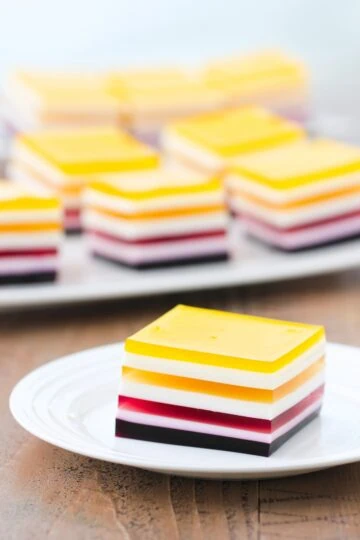
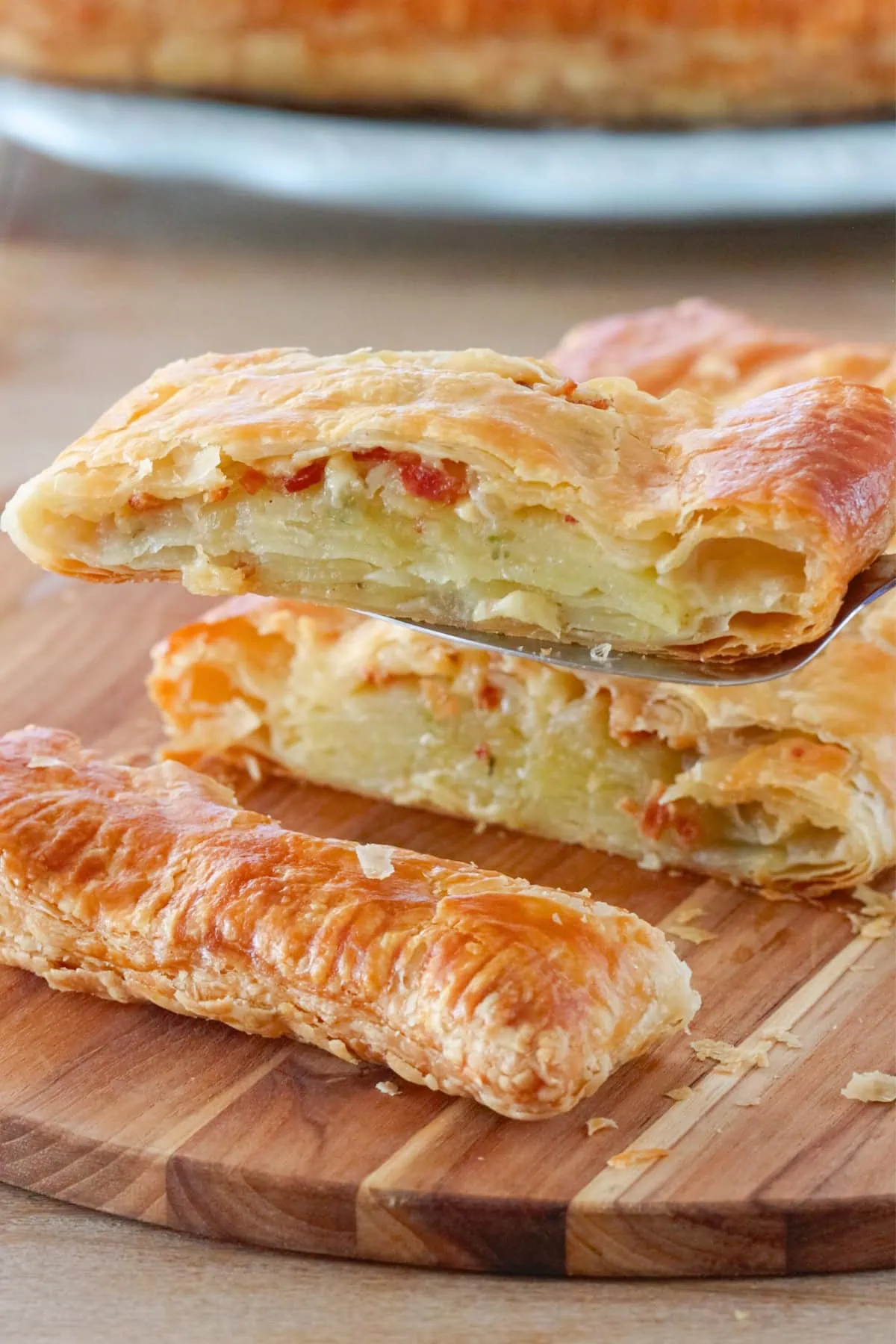
Will it stay thick without the cornstarch? Trying to avoid fillers. Thanks!
It will not be as thick without cornstarch, but you are welcome to try it. The egg yolks help to thicken it as well.
Hi Olga!
I was wondering if the eggs were too temperature or cold? I'm new at making pastry cream.
Thank you!
The eggs can be either room temperature or right out of the refrigerator.